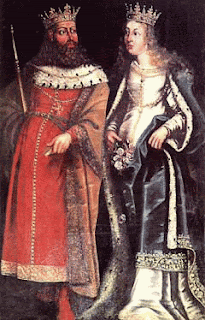“Someone brought this for you
today”, he said smiling. It was a flower and it had a smell of challenge too.
It was a big white flower with many long stamens, fused in the base in groups.
The style was sticking out from the middle of the stamens tube and it also has a
profound cup-shaped hypanthim and 5 long white petals. “Humm, stamens fused at
the base with the style like this is a very Malvaceae-like character… But the
most obvious character of this flower is definitely the large number of long
stamens with only one style coming from the middle”, I thought innocently,
“Humm, plus this hypanthium, it looks very Myrtaceous”.
Myrtaceae?! Tremendous fail!
After a while I found out I was
looking at a Bombax anceps flower, a
common tree here in northern Thailand
 |
| Young Bombax anceps bark and flowers - It actually looks quite Myrtaceous from a distance |
These flowers produce an amazing
smell due to the large amounts of nectar secreted in the morning, attracting
many birds for the pollination daily-service.
 |
| Evidence of pollinators having nectar of Bombax ceiba for breakfast |
Everyday I see this small
beautiful tree, but it only started flowering a few days ago, and let me tell
you it is a must-see not only for flower-freaks (like me) but for everyone –
every time I pass by the tree with someone else I hear their “Wow’s”… No
wonder!
But why was I so confused between
these two families, Myrtaceae and Malvaceae? There should be nothing to be
confused about; in fact they do belong to their own orders, Myrtales and
Malvales, meaning that they are quite different. But they do have similarities
also: both Malvales and Myrtales belong to the Rosids (actually to the same
branch in the Rosids – the Malvids), and that might explain morphological
misunderstandings.
Malvaceae flowers are
characterized for having a synandrium, a structure where all the stamens are
fused together with the style coming from the middle of the synandrium. Another
good character is the contorted corolla fused basally with the androecium. The
number of stamens is very much variable, ranging from 5 to many, however when
many they are grouped in 5 or 10 groups, depending on the number of whorls (one
in Bombax anceps and two in Bombax ceiba).
You can probably summarize a
Myrtaceae-like flower with 3 main characters: large hypanthium, a lot of long
(showy) stamens and reduced petals. In Myrtaceae the hypanthium is very much
developed, having a high number of stamens placed at the top (the ring of
stamens). Bombax anceps flowers
reminded me of Myrtaceae flowers because I totally ignored one of these
characters: the petals! But also the stamens are different – in Myrtaceae they
are not fused together, not in groups or in synandria, so why did I think about
Myrtaceae when I looked at the flower? Because of the calyx shape in Bombax anceps flower, which resembles a
hypanthium.
 |
| Find the differences (the B. anceps flower didn’t have style anymore when I took the picture, but it was long and red as you can probably see in the first picture of this post) |
The hypanthium is a structure sometimes
hard to identify and define, and originating many times misunderstandings on
the interpretation of the morphology of the flower. This means that it is an
important structure to help us to find the big group (Rosids), but we cannot
ignore the other structures.












